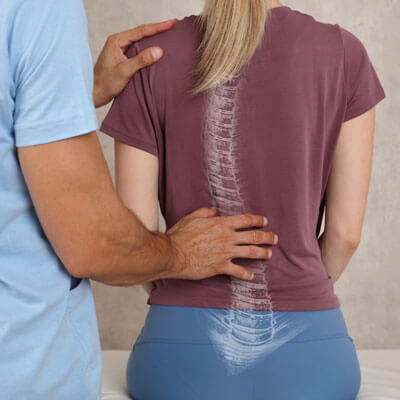 Hunchback, also known as Dowager’s Hump or Kyphosis, is an exaggerated forward rounding of the upper back. It usually forms over a long period of time due to stimulating the body’s compensatory mechanism, which stores a lot of fat in the area. Poor posture during childhood, abnormally shaped vertebrae, or developmental problems may cause kyphosis.
Hunchback, also known as Dowager’s Hump or Kyphosis, is an exaggerated forward rounding of the upper back. It usually forms over a long period of time due to stimulating the body’s compensatory mechanism, which stores a lot of fat in the area. Poor posture during childhood, abnormally shaped vertebrae, or developmental problems may cause kyphosis.
Strategies That Help
This condition can cause pain and discomfort, and other symptoms including stiffness and fatigue. Chiropractic is a popular option for those dealing with these issues. Exercise therapy, specifically strengthening exercises and stretching, has also been shown to be helpful.
A study published in the Journal of Chiropractic Medicine found that chiropractic adjustments and exercise therapy led to significant improvements in posture, pain, and quality of life in patients with kyphosis. Those who participated in exercise therapy had significant improvements in pain and posture compared to those who did not.
Research published in the Journal of Bone and Mineral Research indicates that low levels of vitamin D and calcium may also contribute to the development of kyphosis. The study suggests that proper nutrition, including adequate vitamin D and calcium intake, may help prevent or improve kyphosis.
Natural Methods of Care
At The Balanced Chiropractic Centre, our doctors believe this condition is completely preventable and correctable through chiropractic care, and we see many people with postural issues. A comprehensive examination, along with posture photos, helps us find the cause of your condition. We typically take photos every 12 sessions, depending on the amount of sessions needed.
If the practice member has had 10, 15, 20 years of postural problems, it will take more time for their posture to be fully corrected. After we determine what state their posture is in, we create a plan on how to proceed. So it depends on the person and how bad their posture is, as to how often we need to see them, and what are some things they can do outside our clinic to also correct their posture.
Learn More
Contact us today to learn more.
